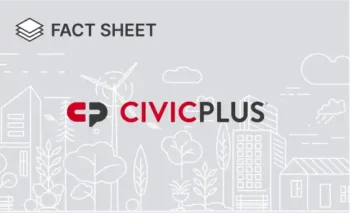Breaking Barriers, Building Trust: Smarter Accessibility for Your Parks and Recreation Platform
For many residents, the journey to your parks and recreation facilities begins online. Creating inclusive and accessible physical spaces within parks and recreation facilities is important, but your digital presence should be accessible too. Parks and recreation directors who embrace digital accessibility will not only support the widespread mission of inclusivity but also enhance community engagement and operational efficiency.
Let’s explore some of the benefits of digital accessibility for parks and recreation and some tips on how to assess your website. You’ll also learn some strategies to gain buy-in from stakeholders, so you can begin planning your accessibility initiatives.
4 Benefits of ADA Compliance for Parks and Recreation Websites
Digital accessibility helps create an inclusive online space, so residents of all abilities can access information and services on your website.
A website designed with digital accessibility generally refers to compliance with standards like the Web Content Accessibility Guidelines (WCAG) and the Americans with Disabilities Act (ADA). Here are some benefits of an accessible parks and recreation website:
- Increased participation and inclusion: An accessible website that supports assistive technology allows all community members to engage with programs and services. This community engagement often leads to additional benefits such as higher quality programs and more advocacy for parks and recreation funding.
- Enhanced resident satisfaction: Providing easy access to information and services online improves the overall user experience, leading to higher resident satisfaction levels. Resident satisfaction and trust can have a significant impact on city-wide initiatives, such as attracting new businesses, triggering economic growth, increasing civic engagement, and retaining residents.
- Operational efficiency: Accessible websites support resident self-service, which reduces the need for parks and recreation staff to spend time on repetitive tasks like class registrations and information requests. When online information and services are accessible to all residents, staff can prioritize other tasks that require more skill.
- Risk mitigation: Compliance with accessibility standards minimizes the risk of legal issues that may arise from non-compliance. These legal issues can result in fines and settlements, plus the additional cost of remediating your non-compliant website.
How to Assess Your Parks and Recreation Website for Digital Accessibility
Digital accessibility includes a combination of technical and design elements. Performing a full assessment on your website can be a huge undertaking, but there are a few simple steps to get started:
- Understand accessibility standards: Familiarize yourself with WCAG guidelines and the four principles of accessibility. According to WCAG guidelines, digital content should be perceivable, operable, understandable, and robust (POUR).
- Identify high-traffic pages: Focus on pages that receive the most visits, such as program registrations or event calendars, ensuring they are accessible. This can help you understand some of your biggest digital accessibility needs right away and quickly implement those fixes throughout the rest of your website.
- Perform accessibility scans: Utilize tools like a web accessibility scan, which can identify critical issues on your website that may need to be addressed first. It’s recommended to review your scan results with an accessibility expert who can provide guidance on the next steps.
Gaining Stakeholder Support for Digital Accessibility Initiatives
Implementing digital accessibility improvements is an important initiative, but it requires buy-in from various stakeholders. Digital accessibility may often be undervalued or misunderstood, so it’s important to use the right strategy when discussing with your stakeholders. These strategies may include:
- Presenting data: Share statistics and case studies that highlight the benefits of accessible websites in similar communities. Educating your stakeholders on the value of digital accessibility and risks of non-compliance can help them understand why your initiative is critical.
- Creating a roadmap: Develop a clear plan outlining the steps, timelines, and resources needed for accessibility enhancements. Stakeholder support is generally easier to achieve when they can review a roadmap and provide feedback, questions, and concerns.
- Identifying and addressing roadblocks: Recognize potential challenges such as budget constraints or lack of expertise and propose solutions like training or phased implementation. Addressing roadblocks early on can ease concerns from stakeholders and help streamline your overall implementation process.
As the role of parks and recreation directors evolve in the digital era, prioritizing web accessibility is more important than ever. By making your online platforms inclusive, you not only comply with legal standards but also demonstrate a commitment to equally serving all community members.
Take the First Step Toward Digital Inclusivity
CivicPlus Web Accessibility solutions provide comprehensive web accessibility reporting and fixes, including hands-off web accessibility remediation, automated PDF remediation, and full website health optimization. If you’re ready to get started, get a free website accessibility scan today.


